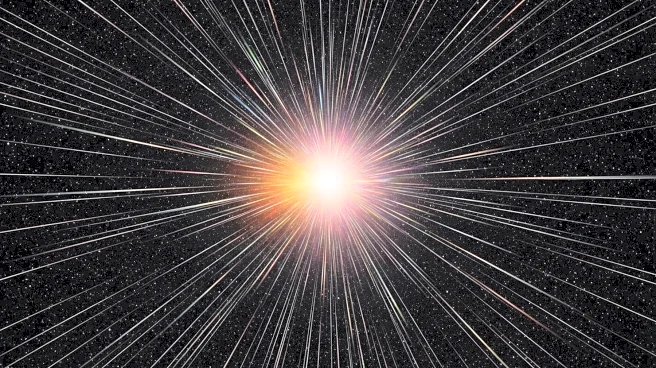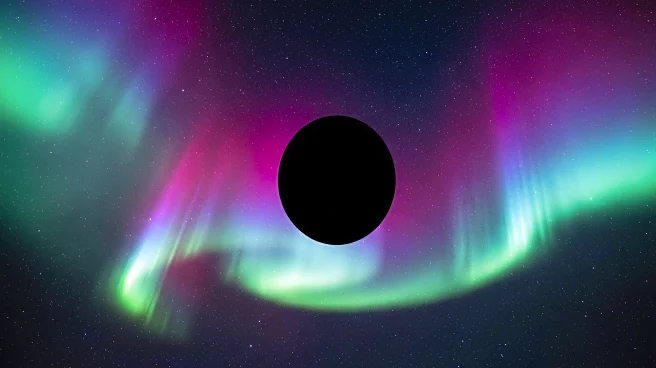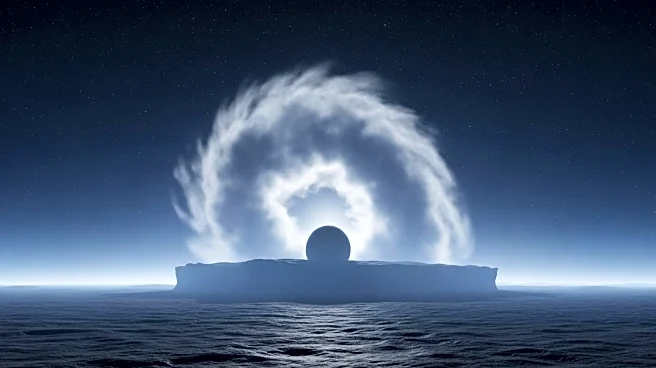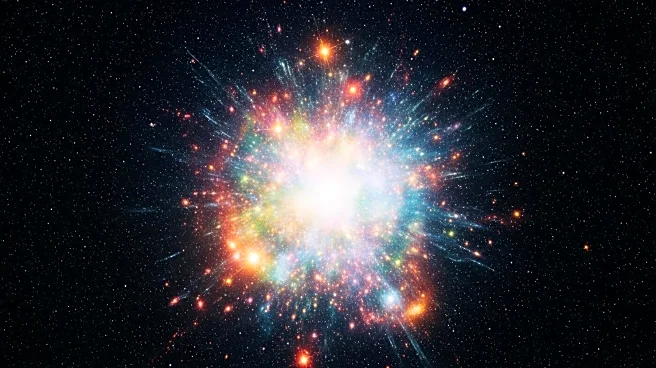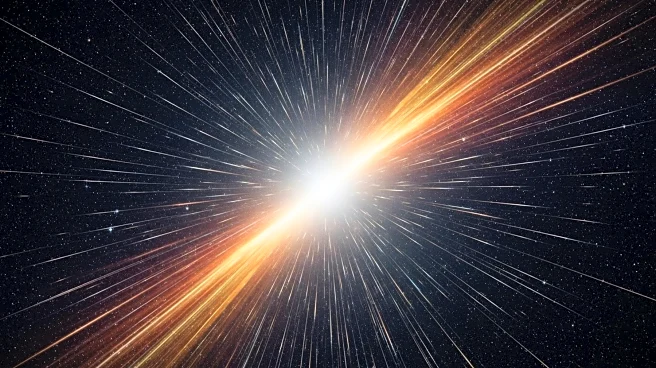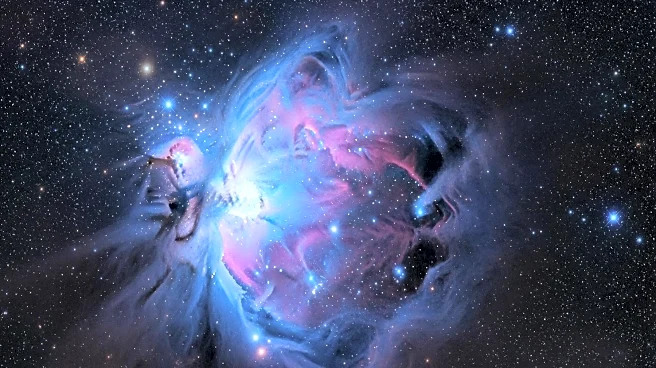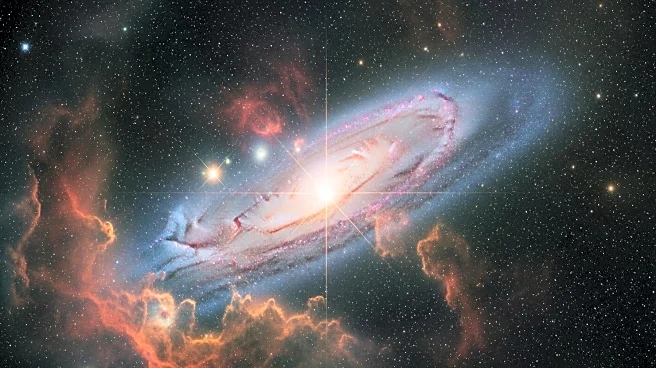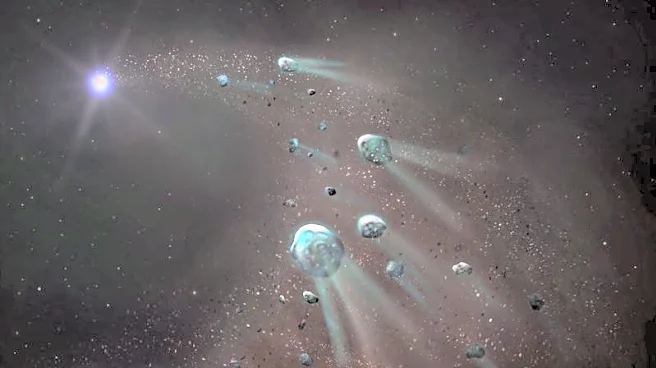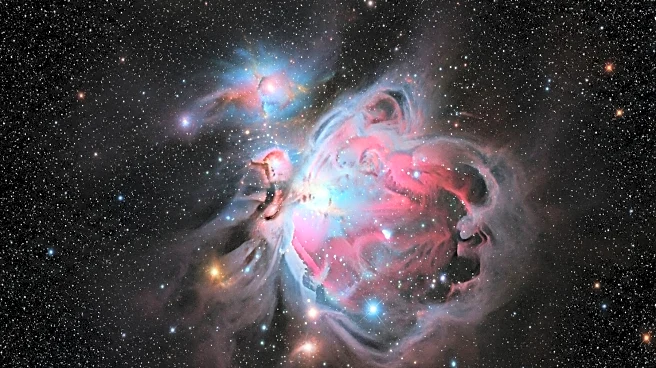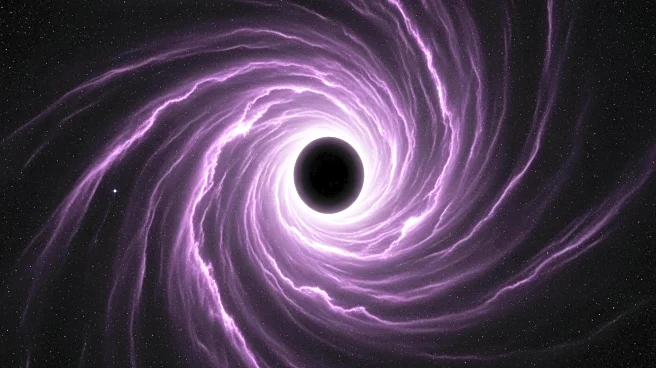What is the story about?
What's Happening?
Astronomers have observed a unique gamma-ray burst, designated as GRB 250702BDE, which lasted nearly a full day, defying traditional understanding of such cosmic events. Typically, gamma-ray bursts are brief, lasting from milliseconds to minutes, and are associated with the collapse of massive stars or the merging of neutron stars. This prolonged burst was first detected by NASA’s Fermi Gamma-ray Space Telescope and later confirmed by the Hubble Space Telescope, indicating its origin outside the Milky Way. Researchers are investigating the anomaly, which may involve an intermediate-mass black hole, a rare cosmic object.
Why It's Important?
The discovery of GRB 250702BDE is significant as it challenges existing theories about gamma-ray bursts and cosmic phenomena. This event could lead to new insights into the life cycles of stars and the nature of cosmic explosions. The involvement of an intermediate-mass black hole, if confirmed, would be groundbreaking, as these objects are not well understood. The prolonged duration of the burst suggests new mechanisms at play, potentially altering our understanding of cosmic events and leading to advancements in astronomical research.
What's Next?
Researchers are focused on pinpointing the exact location and energy output of GRB 250702BDE. Advanced telescopes like the Very Large Telescope in Chile are being utilized to gather more data. The findings could refine existing models of gamma-ray bursts and lead to the discovery of new cosmic objects or processes. Continued observation and study are essential to unravel the mysteries of this anomaly and its implications for the field of astronomy.
Beyond the Headlines
The GRB 250702BDE event highlights the importance of advanced observational tools in astronomy. The ability to detect and analyze distant cosmic events is crucial for expanding our understanding of the universe. This anomaly may pave the way for new theories and discoveries, emphasizing the need for ongoing research and technological advancements in the field.
AI Generated Content
Do you find this article useful?
